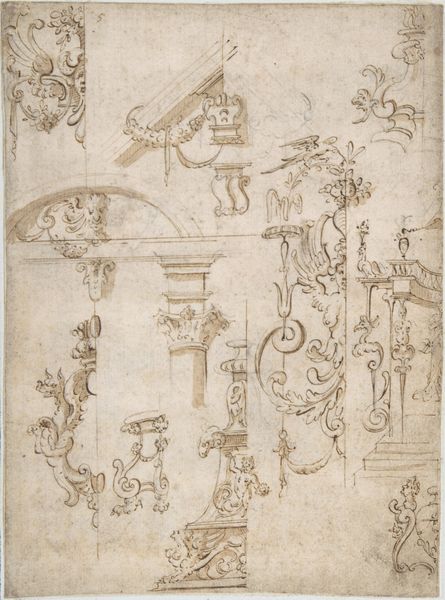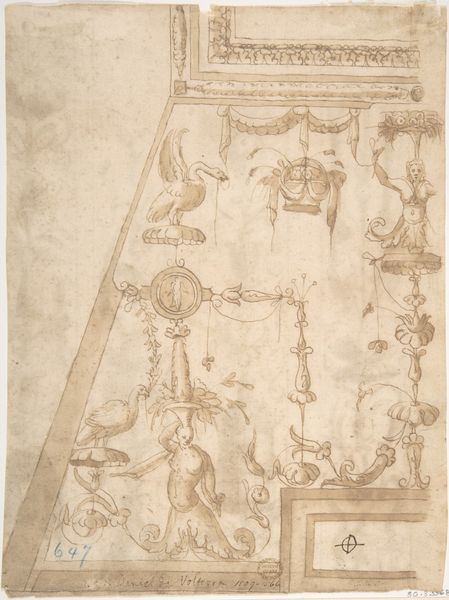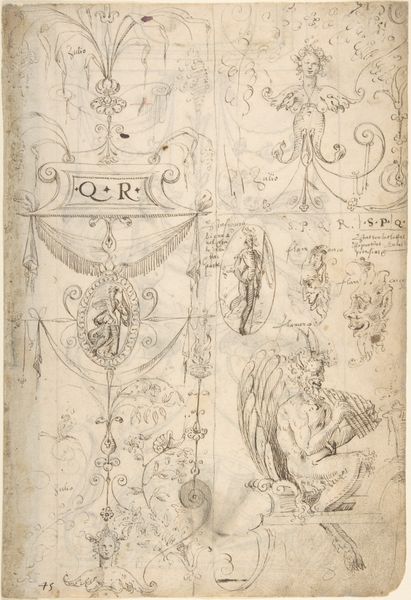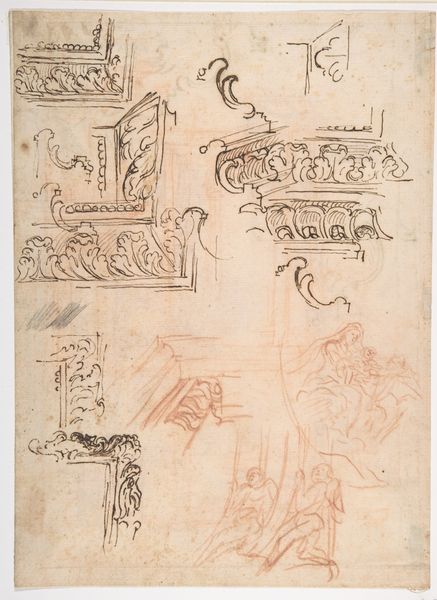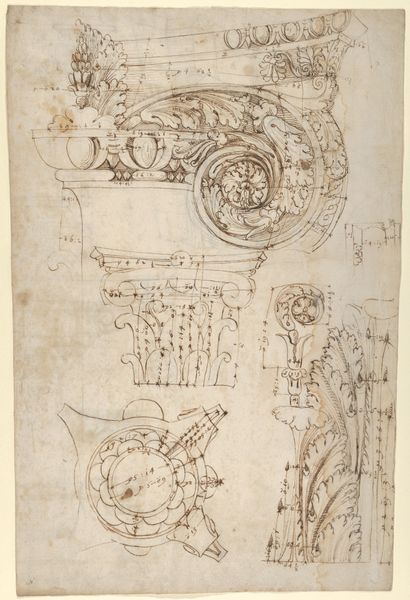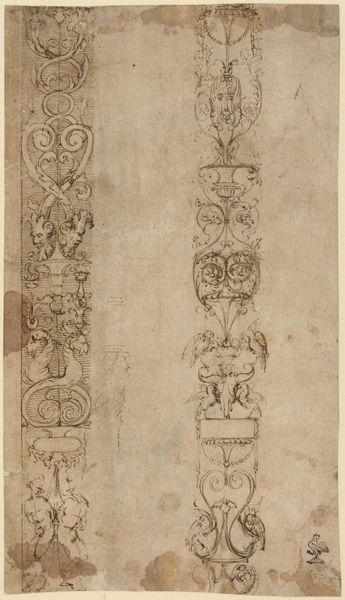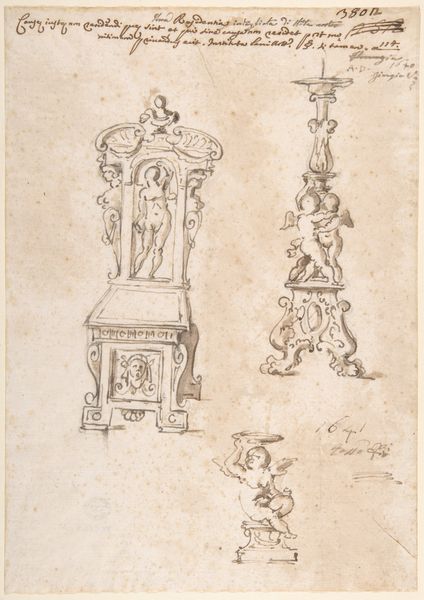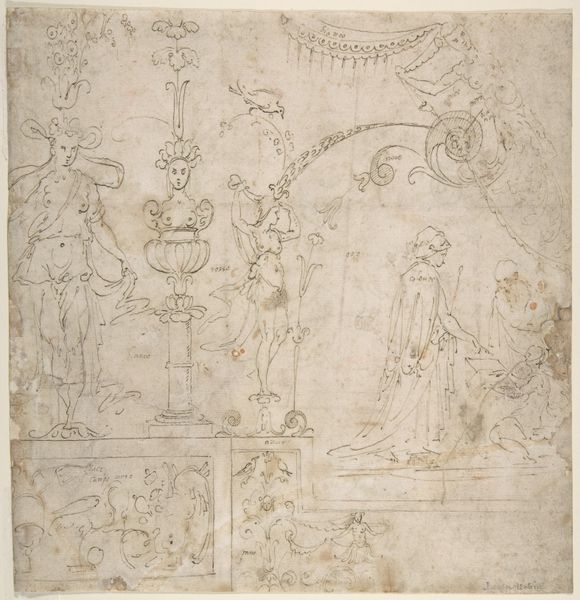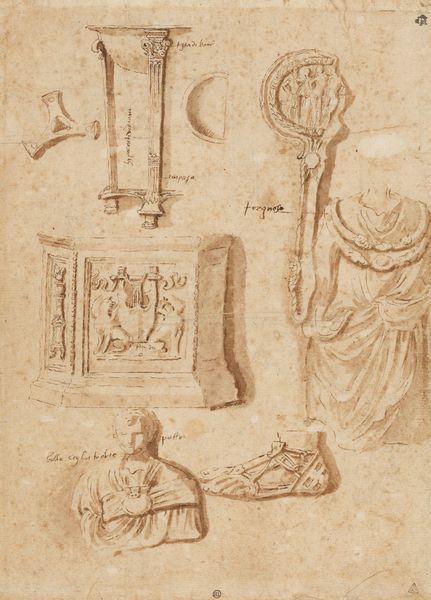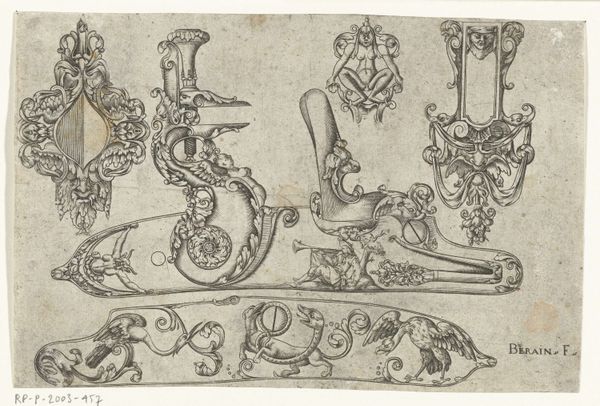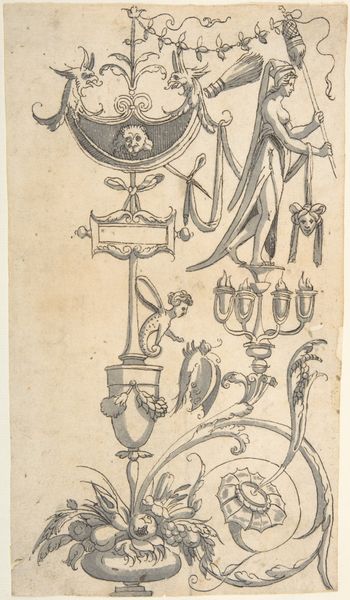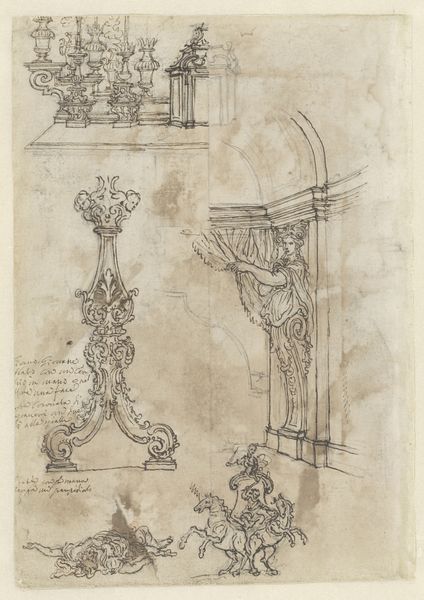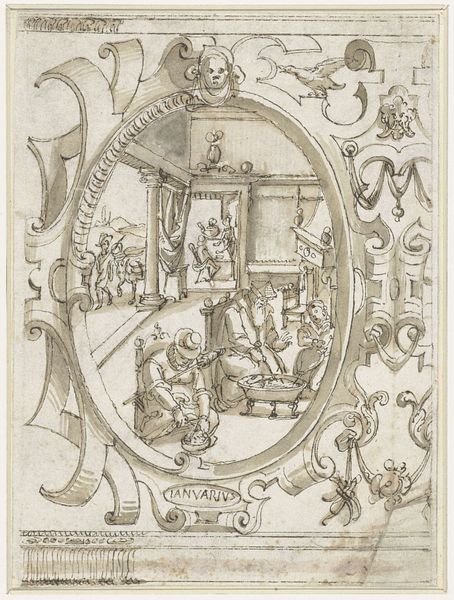
Design of Antique-Style Ornament ("Grotteschi") 1500 - 1600
0:00
0:00
drawing, pencil
#
drawing
#
figuration
#
11_renaissance
#
pencil
#
history-painting
#
italian-renaissance
Dimensions: 13 x 8-7/8 in. (33.0 x 22.5 cm)
Copyright: Public Domain
Curator: Welcome to this study, dating from 1500 to 1600, known as "Design of Antique-Style Ornament ('Grotteschi')". The artist is, unfortunately, unknown. What’s your immediate response? Editor: A flurry of Renaissance motifs! It feels like a wallpaper sample, a chaotic yet organized collection of classical imagery. A rather whimsical sketch using pencil in drawing, what do you see formally in the lines? Curator: Indeed. Note how the composition is fundamentally organized: it consists of rows of various figures arranged in compartments. Observe the repetition and symmetry. There is a structural logic at play. Do you see that repetition of circular motifs and balanced positioning that guide the eye across the surface? Editor: Fascinating, but also note how these meticulously drawn forms—grotesques, putti, architectural fragments—hint at a broader system of craft. These aren’t mere flights of artistic fancy. Rather, it seems they’re designs for manufacture, prototypes for actual objects of material culture. Were these craftsmen who transferred images onto paneling, vases, and tapestries? Curator: It's difficult to say with certainty, though the precision hints at its utilization as a guide for workshops, offering different design elements and compositions. The appeal of classical antiquity surely permeates these designs, yet also there is a divergence in the form. Editor: Right. The production context adds another layer of meaning to the figures themselves. What seems to be a riot of fanciful imagery might actually speak to the labor and consumption involved in bringing this art into the world. The classical imagery is filtered through the needs of its day. Curator: True. And from my perspective, the inherent tension is that even amidst this apparent fragmentation, the whole composition resonates through symmetry and design logic. The figures may appear playful, and I wonder what effect these elements of history bring together? Editor: These images remind us of what we want art to be, things of pleasure made to endure! Thanks for sharing this gem. Curator: A worthwhile discussion. This glimpse into artistic practices serves as a compelling point, challenging us to engage both form and production!
Comments
No comments
Be the first to comment and join the conversation on the ultimate creative platform.
